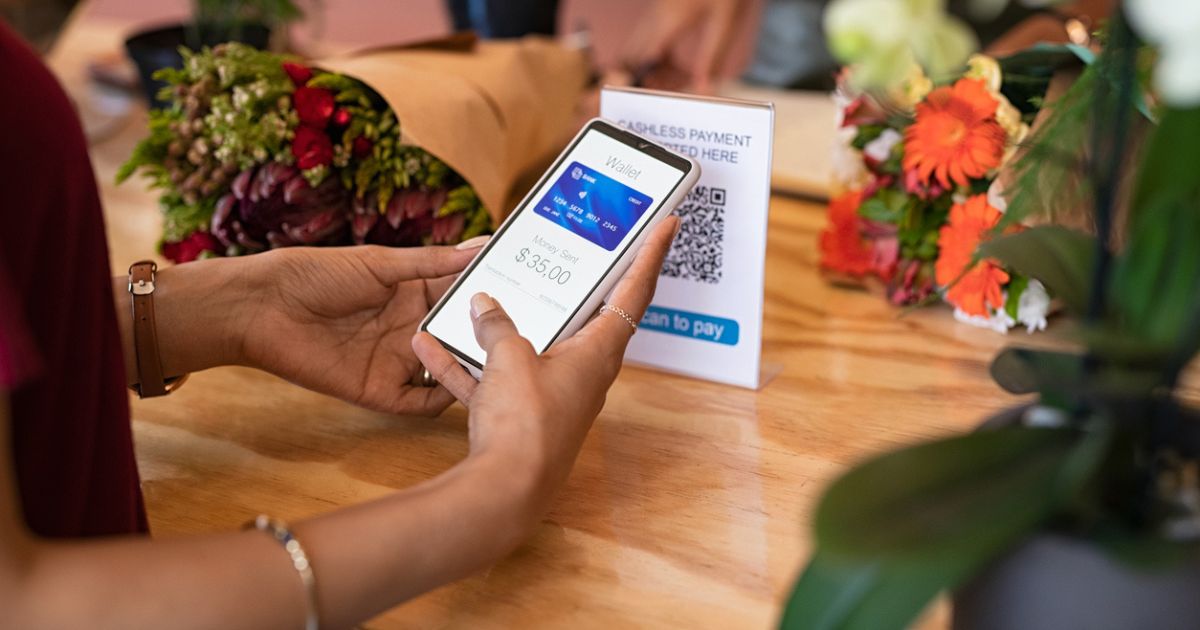
| October 24th, 2023 |
The Mobile Payments Revolution — Adapting Credit Card Processing.
In recent years, the way we make payments has undergone a significant transformation, thanks to the rise of mobile payments. With the advent of smartphones and mobile apps, consumers now have the convenience of making payments with just a few taps on their screens. This shift has not only changed the way we shop but has also prompted credit card processing to adapt and evolve. In this article, we’ll explore the mobile payments revolution, its impact on credit card processing, the trends driving this change, and the security measures that accompany it. By the end, you’ll have a clear understanding of how the payment landscape is evolving and how businesses are keeping up.
The Mobile Payments Revolution:
The mobile payments revolution refers to the shift from traditional payment methods, such as cash and physical credit cards, to mobile-based payment solutions. These solutions leverage the power of smartphones and mobile apps to facilitate transactions conveniently and securely. Here are some key drivers of this revolution:
1. Smartphone Penetration:
The widespread adoption of smartphones has created a vast user base ready to embrace mobile payments. With smartphones in almost every pocket, consumers have a powerful tool for conducting transactions.
2. Convenience:
Mobile payments offer unparalleled convenience. Customers can pay for goods and services with a simple tap, eliminating the need to carry cash or physical credit cards.
3. Speed:
Mobile payments are often faster than traditional payment methods. No more fumbling for change or waiting for paper receipts; transactions are completed in seconds.
4. Enhanced Security:
Mobile payment apps incorporate robust security features like tokenization, biometrics, and encryption, making them highly secure for users.
5. Contactless Payments:
The rise of contactless payments, especially in response to health concerns, has accelerated the adoption of mobile payments. Contactless payments allow users to make purchases without physically touching payment terminals.
The Impact on Credit Card Processing:
The mobile payments revolution has had a profound impact on credit card processing:
1. Mobile Wallets:
Mobile wallets like Apple Pay, Google Pay, and Samsung Pay have gained popularity. These wallets allow users to link their credit or debit cards to their mobile devices and make payments securely.
2. In-App Payments:
Many businesses, particularly in the retail and e-commerce sectors, now offer in-app payment options. Users can complete transactions within mobile apps, simplifying the shopping experience.
3. Point-of-Sale (POS) Systems:
Mobile POS systems, such as Square and PayPal Here, enable businesses to accept payments through smartphones and tablets, reducing the need for traditional card terminals.
4. E-commerce Integration:
E-commerce platforms have adapted to accommodate mobile payments seamlessly. Consumers can shop online using mobile devices and complete transactions with ease.
5. QR Codes:
QR code-based payments have become prevalent, allowing users to scan codes to make payments or receive funds. This method is particularly popular in regions like Asia.
Trends Driving the Mobile Payments Revolution:
The mobile payments industry is experiencing rapid growth and transformation, driven by several key trends that are shaping the future of credit card processing and financial transactions. Let’s expand on these trends:
Biometric Authentication:
Biometric authentication methods, such as fingerprint and facial recognition, are gaining widespread adoption. These technologies enhance security by providing a convenient and secure way to verify a user’s identity. They are becoming standard features in mobile payment apps, reducing the reliance on traditional passwords or PINs.
Wearables:
The integration of mobile payment capabilities into wearables, including smartwatches and fitness trackers, is making payments more convenient and accessible. Users can make secure transactions by simply tapping their wearable devices, reducing the need to carry physical cards or smartphones.
Cryptocurrency Integration:
Some mobile payment apps have started to support cryptocurrency transactions, allowing users to diversify their payment options. This trend aligns with the growing popularity of cryptocurrencies and offers users additional choices for making digital payments.
Peer-to-Peer Payments:
Peer-to-peer payment apps, such as Venmo, PayPal, Cash App, and others, have gained significant traction. They enable users to send money to friends and family instantly, splitting bills, sharing expenses, and even making small purchases. These apps are reducing the reliance on traditional banking methods for person-to-person transfers.
AI and Machine Learning:
Artificial intelligence and machine learning play a pivotal role in mobile payment apps. These technologies analyze user data to provide personalized payment experiences. They can offer targeted promotions, discounts, and product recommendations based on a user’s transaction history and preferences. This enhances the overall user experience and increases customer engagement.
Contactless Payments:
Contactless payment methods, including Near Field Communication (NFC) and QR codes, have gained popularity. Users can make payments by simply tapping their mobile devices or scanning a code, reducing physical contact and enhancing the speed and convenience of transactions.
Digital Wallets:
Digital wallets, such as Apple Pay, Google Pay, and Samsung Pay, have become increasingly integrated into mobile devices. Users can store multiple payment methods and loyalty cards in these wallets, streamlining the checkout process and further reducing the need for physical cards.
IoT Integration:
The Internet of Things (IoT) is expanding the scope of mobile payments. IoT devices, like smart home appliances and connected vehicles, can initiate and process payments autonomously, providing seamless and convenient transaction experiences.
Cross-Border Payments:
Mobile payment apps are increasingly offering cross-border payment capabilities, enabling users to make international transactions and send money abroad. This simplifies global commerce and money transfers.
Regulatory Changes:
Regulatory changes and initiatives, such as Open Banking and PSD2 in Europe, are opening up opportunities for innovative payment solutions and greater competition in the mobile payments space.
Security Measures in Mobile Payments:
Security is a critical aspect of mobile payments, and it’s essential to ensure that users’ financial information remains safe when conducting transactions through mobile apps or devices. Let’s expand on the mentioned security measures and include some additional aspects:
Tokenization:
Tokenization involves replacing sensitive data, such as credit card numbers, with unique tokens. These tokens are meaningless to potential attackers, reducing the risk of data breaches.
Encryption:
End-to-end encryption ensures that payment data is protected while it’s in transit between the mobile device and the payment processor. This encryption makes the data unreadable to unauthorized parties.
Multi-Factor Authentication (MFA):
MFA adds an extra layer of security by requiring users to provide two or more forms of authentication before completing a transaction. Common factors include something you know (e.g., a password), something you have (e.g., a mobile device), and something you are (e.g., a fingerprint).
Fraud Detection:
Advanced fraud detection algorithms and machine learning models analyze transaction patterns in real time. They can detect unusual or suspicious activities and trigger security measures like blocking transactions or requiring additional authentication.
Biometrics:
Biometric authentication methods, such as fingerprint and facial recognition, provide a secure and convenient way to verify a user’s identity. These biometric markers are difficult to replicate, making it challenging for unauthorized users to access mobile payment apps.
Device Security:
Ensuring the security of the mobile device itself is crucial. This includes using device passcodes, keeping operating systems and apps up-to-date, and enabling remote tracking and wiping features in case the device is lost or stolen.
Secure Element:
Many mobile payment systems use a secure element within the device, which is a dedicated hardware or software component responsible for securely storing and managing payment credentials.
Transaction Confirmation:
Users should receive transaction confirmation notifications in real time. This allows them to verify the details of the transaction and quickly report any unauthorized or suspicious activities.
Geolocation and Behavioral Analysis:
Some mobile payment systems use geolocation and behavioral analysis to verify the legitimacy of transactions. For instance, if a transaction occurs in a location far from the user’s usual location, it may trigger additional security checks.
Regular Security Audits:
Mobile payment providers should conduct regular security audits and penetration testing to identify vulnerabilities and address them proactively.
User Education:
Educating users about best practices for mobile payment security, such as using strong, unique passwords and being cautious about sharing personal information, is essential.
Regulatory Compliance:
Mobile payment services must adhere to relevant industry standards and regulations, such as the Payment Card Industry Data Security Standard (PCI DSS) and the General Data Protection Regulation (GDPR).
Secure Network Connections:
Users should be encouraged to use secure, trusted Wi-Fi networks or cellular data for mobile payments to reduce the risk of interception or man-in-the-middle attacks.
Conclusion:
The mobile payments revolution has transformed the way we conduct financial transactions, offering unparalleled convenience and security. Credit card processing has adapted to this shift, embracing mobile wallets, in-app payments, and contactless technology. As trends like biometric authentication, wearables, and cryptocurrency integration continue to evolve, the future of mobile payments and credit card processing promises even more innovation.
For businesses and consumers alike, it’s essential to stay informed about these changes and prioritize security measures to make the most of the mobile payments revolution.
